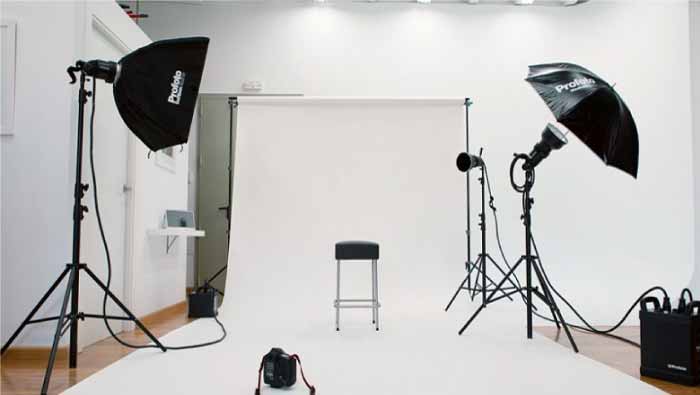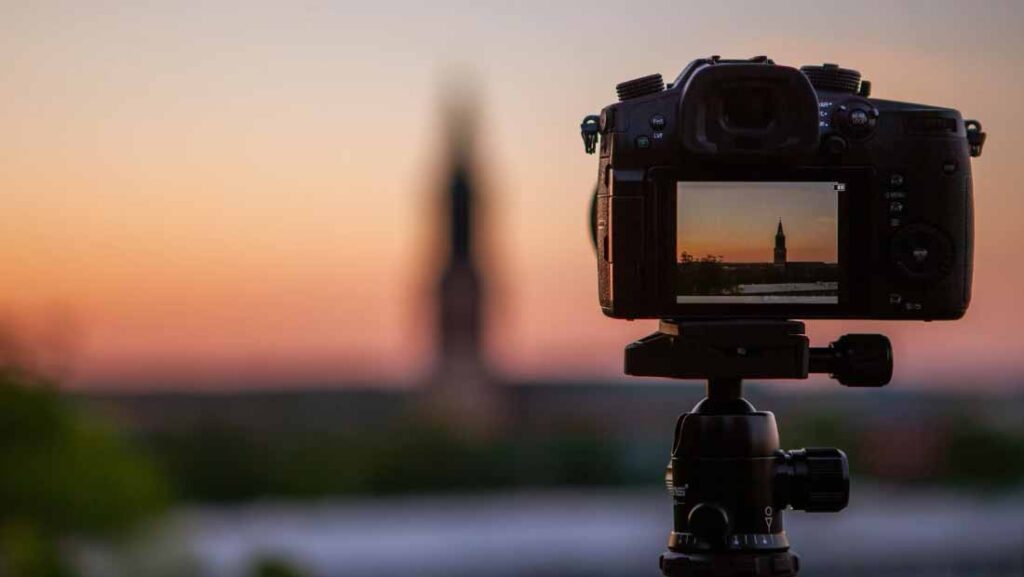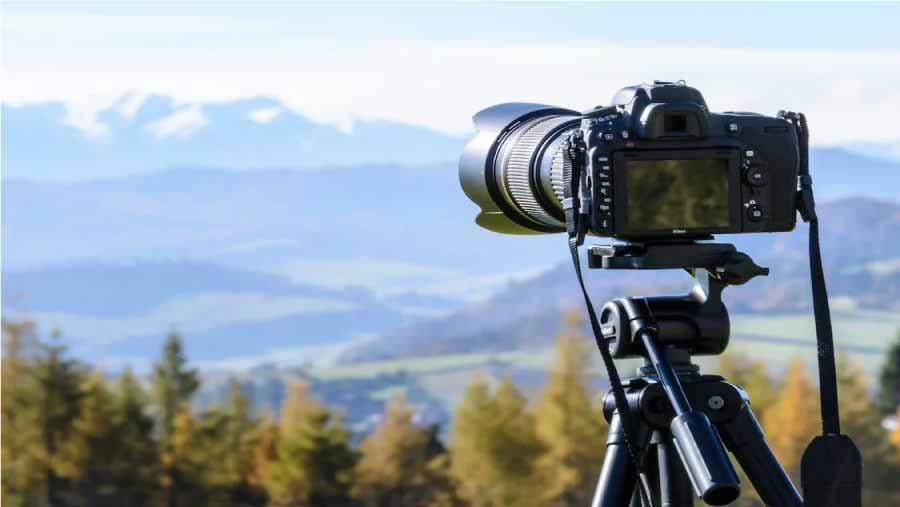There are several lighting techniques in photography, some of the most common include:
Natural lighting
Use natural sunlight or light sources available in the environment in which the subject to be photographed is located.
Fill light
It is used to fill in the shadows that occur in a subject due to a very intense main light, this fill light is usually weaker than the main one.
Contrast light
Used to create shadows and highlight the edges of the subject, it is usually placed at an angle that produces diagonal shadows.
Backlight
It is used to illuminate the background of the photograph, in order to separate the subject from the background.
Hair light
It is a light that is used to illuminate the subject’s hair, placed behind the subject and above their head.
Accent light
It is used to highlight a specific part of the subject, it can be a directional light or a fill light.
Diffused lighting
Used to produce soft shadows and a more natural look, light is filtered through a diffuser material.
Ring light
This light surrounds the camera lens and is used to illuminate the subject frontally, creating a smooth, even look on the face.
Flash light
It is used to add additional lighting to the subject, it can be used in combination with other lighting techniques to obtain the desired effect.
High-contrast lighting
It is used to produce dramatic and focused images in shadow and contrast.
Natural lighting in photography
Natural lighting in photography refers to the use of light available in the environment to illuminate the subject of the photograph. It can be sunlight, window light, moonlight, among others.
When using natural lighting, it is important to consider the time of day and direction of light. For example, sunlight is softer during the early morning or late afternoon, while it is most intense at noon. The direction of light also affects the appearance of the photograph. If the light is behind the subject, a backlight effect will occur, while if the light is in front of the subject, a front illumination will occur.
In addition, natural lighting can also be supplemented with the use of reflectors or diffusers to soften or intensify the light, as needed.
Overall, natural lighting can create photographs with a natural, organic appearance, and can be a great choice for portraits, landscapes, and street photography.
Fill light in photography
Fill light in photography is used to soften the shadows produced by the main light and thus reduce the contrast in a scene. This technique is especially useful when the main light is very strong, as it can create very dark and unflattering shadows on the subject.
The fill light can be provided by a secondary light source, such as a flash or studio lamp, or it can be natural ambient light if it is in a location where the light is suitable. The intensity of the fill light is usually lower than that of the main light, so shadows are softened without adding too much additional light.
To use the fill light, the photographer can place the secondary light to one side of the subject, pointing towards the shadow area. Alternatively, a reflector can also be used to bounce light from the main source off the subject’s shadows, creating a fill effect.
Fill light is very useful to achieve a more balanced and natural image, especially in portrait photography. However, it is important to remember that using too much fill light can completely eliminate shadows and create a flat and uninteresting appearance in the image. Therefore, it is important to find a balance between the fill light and the main light to get the desired effect.
Contrast light in photography
Contrast light in photography is used to create strong shadows and highlight the edges and contours of the subject, which can result in a dramatic and striking image. This technique is often used in portrait and fashion photography, as well as in nature and landscape photography to create a sense of depth and texture.
Contrast light is achieved by placing the main light source at an oblique angle to the subject, so that light falls diagonally on the subject. This will create strong shadows on one side of the subject and a brighter side on the other side, creating a contrasting effect.
In addition, multiple light sources can be used to achieve an even more dramatic effect, such as illuminating the background with a fill light while the main light is more direct on the subject.
It’s important to note that contrast light can be very effective, but it can also be challenging to control, as very intense light can create very harsh and unflattering shadows. Therefore, it is important to play with the intensity and angle of light to get the desired effect and get a balanced image.
Backlight in photography
Backlight in photography is a technique in which the background behind the subject is illuminated to create a luminous effect and highlight the subject. This technique is especially effective in creating a magical or dramatic atmosphere in photography.
To create the backlight, a light source placed behind the subject, such as a flash or studio lamp, is used. This light illuminates the background behind the subject, creating a halo of light around the edge of the subject. It is important to adjust the intensity of the light to avoid overexposure of the background or underexposure of the subject.
In addition, the backlight can also be used to create silhouettes of the subject, when the intensity of the backlight is greater than that of the light illuminating the subject. In this case, the subject is presented as a dark form with the background illuminated.
Backlight can be used in different types of photography, such as portraiture, fashion, wedding photography, and also in landscape photography to create a sense of depth and highlight specific elements of the landscape.
In general, backlight can be very effective in creating a dramatic atmosphere and giving a special touch to photography, but it is important to note that its excessive use can produce an artificial and exaggerated effect. Therefore, it is important to balance the intensity of the backlight with the illumination of the subject and the environment to obtain a well-balanced image.
Hair light in photography
Hair light in photography is used to illuminate the subject’s hair, creating an effect of shine and texture on the hair. This technique is especially effective in portrait photography and fashion to highlight hairstyle and hair style.
Hair light is achieved using a light source placed behind the subject, pointing towards the back of the subject’s head. This light illuminates the hair from behind, creating a shine effect and highlighting the texture and shape of the hair.
It is important to adjust the intensity of the light to avoid overexposure and achieve a natural and balanced effect. You can also adjust the angle of the light to create different lighting effects on the hair, such as a soft and natural effect or a more dramatic and contrasting effect.
Hair light can be used in conjunction with other lighting techniques, such as fill light and main light, to create a balanced image with adequate lighting. Overall, hair light is an effective technique for highlighting hairstyle and hair style in portrait and fashion photography.
Accent light in photography
Accent light in photography is a lighting technique in which a separate light source is used to highlight a specific object in the image. This technique is commonly used in product, architecture and landscape photography to highlight key elements and create a sense of depth.
Accent light is usually placed at an oblique or lateral angle to the object to highlight its texture, shape, or color. A directional light, such as a flash or studio lamp, or a soft light, such as a fill light or diffused light, can be used.
In product photography, accent light is often used to highlight key product features such as labels, details, and texture. Architecture, accent light is used to highlight architectural details, such as columns, arches, and moldings.
In landscape photography, accent light is used to highlight key elements, such as trees, rocks or buildings, to create a sense of depth and highlight the natural beauty of the landscape.
Accent light can be used in conjunction with other lighting techniques, such as fill light and main light, to create a balanced image with adequate lighting. Overall, accent light is an effective technique for highlighting key elements in the image and creating a sense of depth and dimension.
Diffused lighting in photography
Diffused lighting in photography is a lighting technique in which a soft, diffused light source is used to create uniform, soft illumination in the image. This technique is especially useful in portrait and fashion photography, as it helps soften shadows and create a smooth, natural appearance.
Diffused lighting can be achieved using a variety of light sources, such as a light box, diffuser umbrella, or diffuser display. These light sources diffuse light, creating smooth, uniform illumination on the subject and reducing shadows and reflections.
An advantage of diffused lighting is that it creates a soft and natural atmosphere in the image. It is also useful for reducing imperfections in the subject’s skin, such as blemishes and wrinkles, as it softens shadows and highlights fine details.
Diffused lighting can be used in conjunction with other lighting techniques, such as fill light and main light, to create a balanced image with adequate lighting. Overall, diffused lighting is a very effective technique for creating soft, natural lighting in the image and is especially useful in portrait and fashion photography.
Ring light in photography
Ring light in photography is a lighting technique in which a special type of light is used that is placed around the camera lens, creating a uniform and soft light effect on the subject. This technique is commonly used in portrait and fashion photography to create a soft, uniform light effect on the subject’s face.
The ring light is made up of a series of small LED lights or incandescent bulbs arranged in a circular shape. These lights are mounted on a ring that is placed around the camera lens. The ring light creates a soft, uniform light effect on the subject’s face, eliminating shadows and highlighting fine details.
An advantage of ring light is that it creates a uniform and soft light effect on the subject’s face, which helps soften shadows and highlight fine details. Ring light is also useful for reducing imperfections on the subject’s skin, such as blemishes and wrinkles, as it softens shadows and highlights fine details.
Ring light can be used in conjunction with other lighting techniques, such as fill light and main light, to create a balanced and properly lit image. Overall, ring light is a very effective technique for creating a soft, uniform light effect on the subject’s face and is especially useful in portrait and fashion photography.
Flash light in photography
Flash light in photography is a lighting technique in which an artificial light source, called a flash, is used to illuminate the subject and create a brighter, sharper image. The flash is used in situations where natural light is insufficient or where additional lighting is required to achieve the desired effect.
Flashes can be mounted on the camera or used remotely, for example mounted on a stand and triggered wirelessly. Flashes can also vary in size and shape, from small hot shoe flashes to large flash panels.
An advantage of flash light is that it allows you to create additional illumination when natural light is insufficient, such as indoors in low light or backlit scenes. In addition, the flash can freeze the movement of the subject , which is especially useful in sports photography or in situations where you want to freeze the movement of the subject.
However, using flash can present some challenges, such as the possibility of creating harsh shadows or unwanted reflections. Therefore, it is important to correctly adjust the intensity of the flash and its position to achieve balanced lighting and avoid these problems.
Overall, flash light is a very useful technique in photography to add additional lighting and achieve the desired effect. It is important to experiment with different flash settings and positions to achieve the right lighting in each situation.
High-contrast lighting in photography
High-contrast lighting in photography refers to a lighting technique in which a very bright and direct light source, such as sunlight on a very sunny day, is used to create dark shadows and areas of very bright light in the image. This technique can create a dramatic and emphatic effect on the image.
High-contrast lighting is often used in fashion photography and fine art photography to create dramatic and emphatic effect. It can also be used to highlight fine details in the image and to create a sense of depth and texture in the image.
One of the advantages of high-contrast lighting is that it can create a very dramatic and emphatic image. However, it can also be challenging, as it can result in a very dark image or overexposed areas if not handled properly. Therefore, it is important to take into account the light intensity and position of the subject and adjust the exposure and other camera settings accordingly.
In summary, high-contrast lighting in photography is a useful technique to create a dramatic and emphatic effect on the image, but it is important to handle it properly to avoid exposure problems and obtain a well-balanced image.


